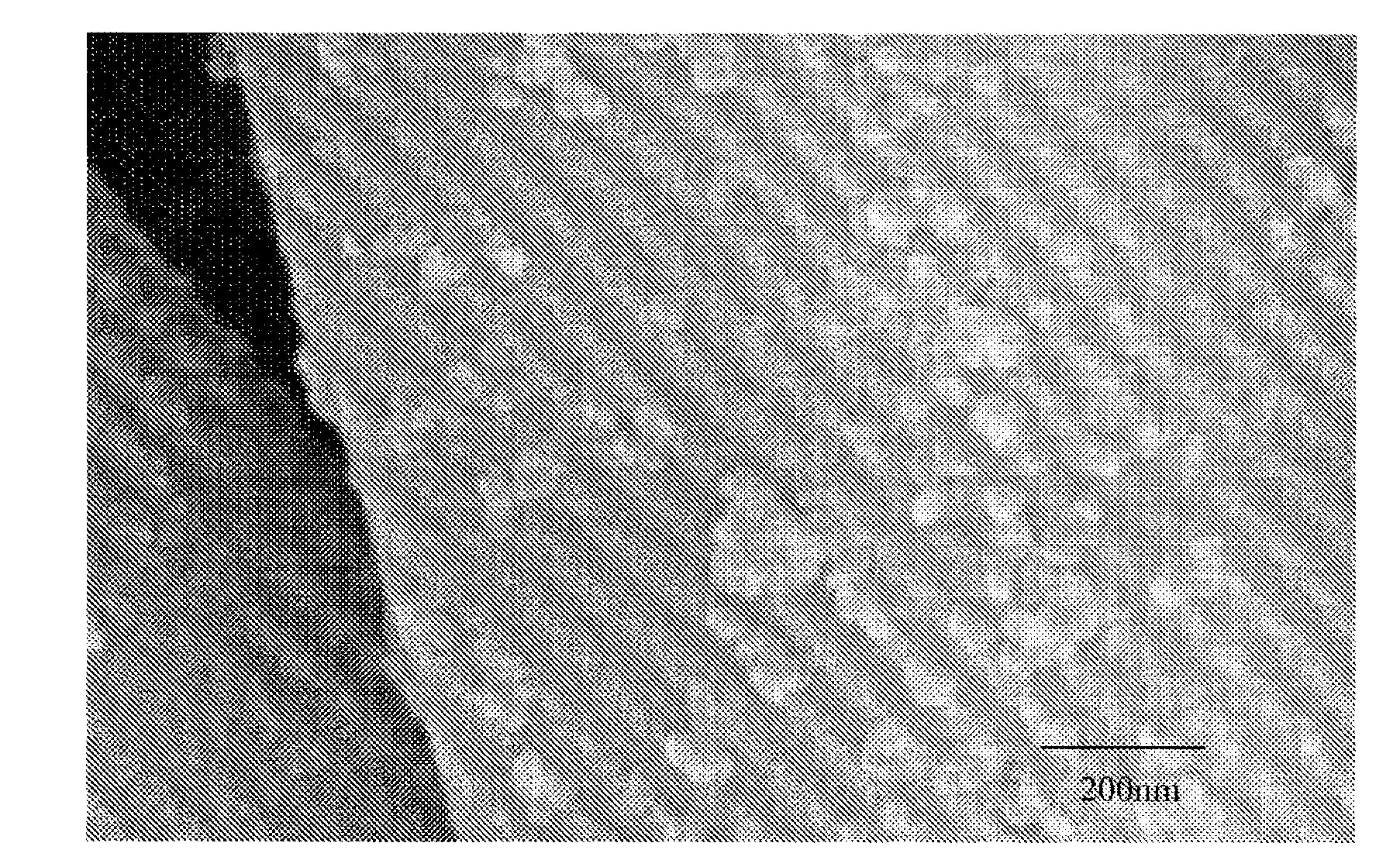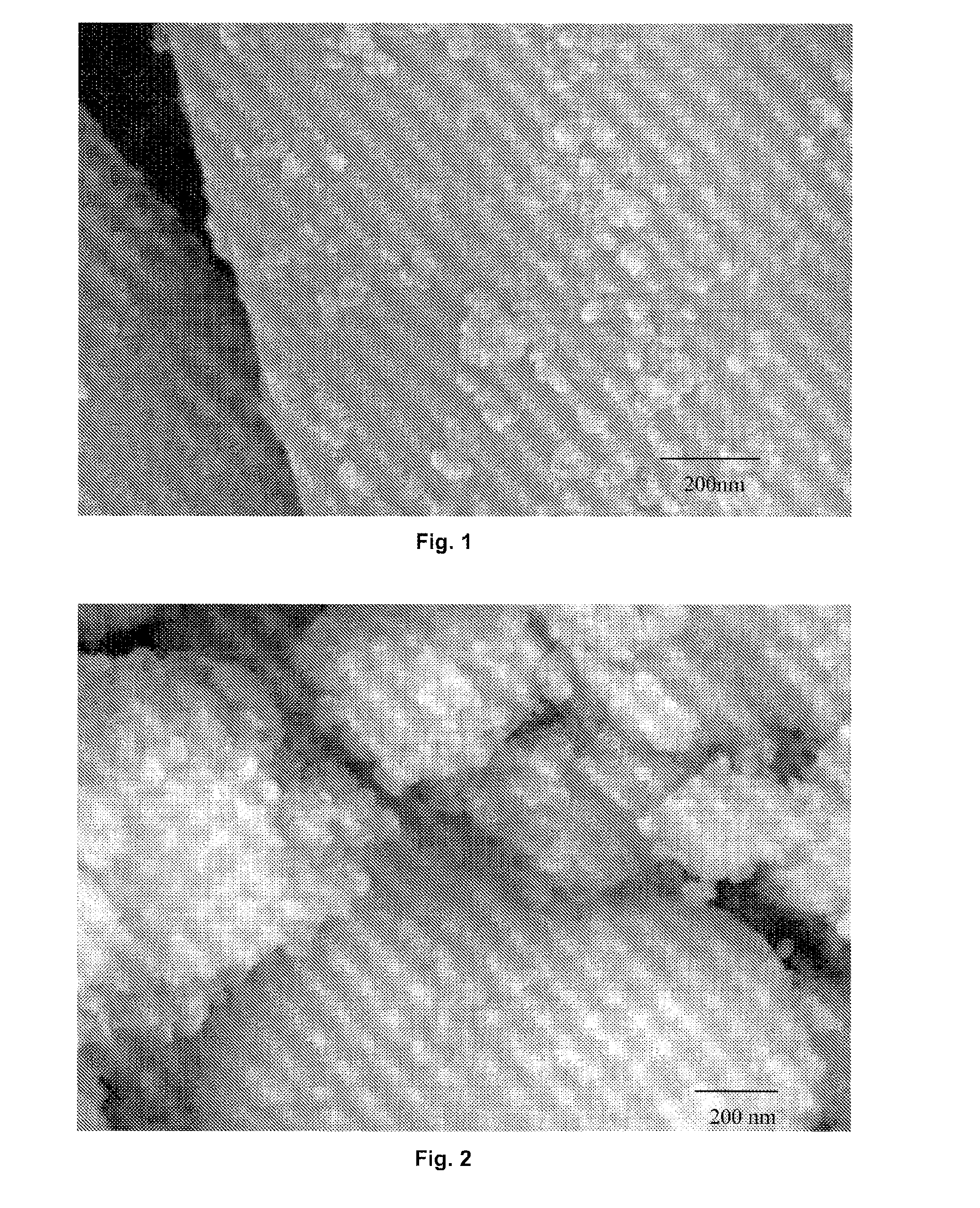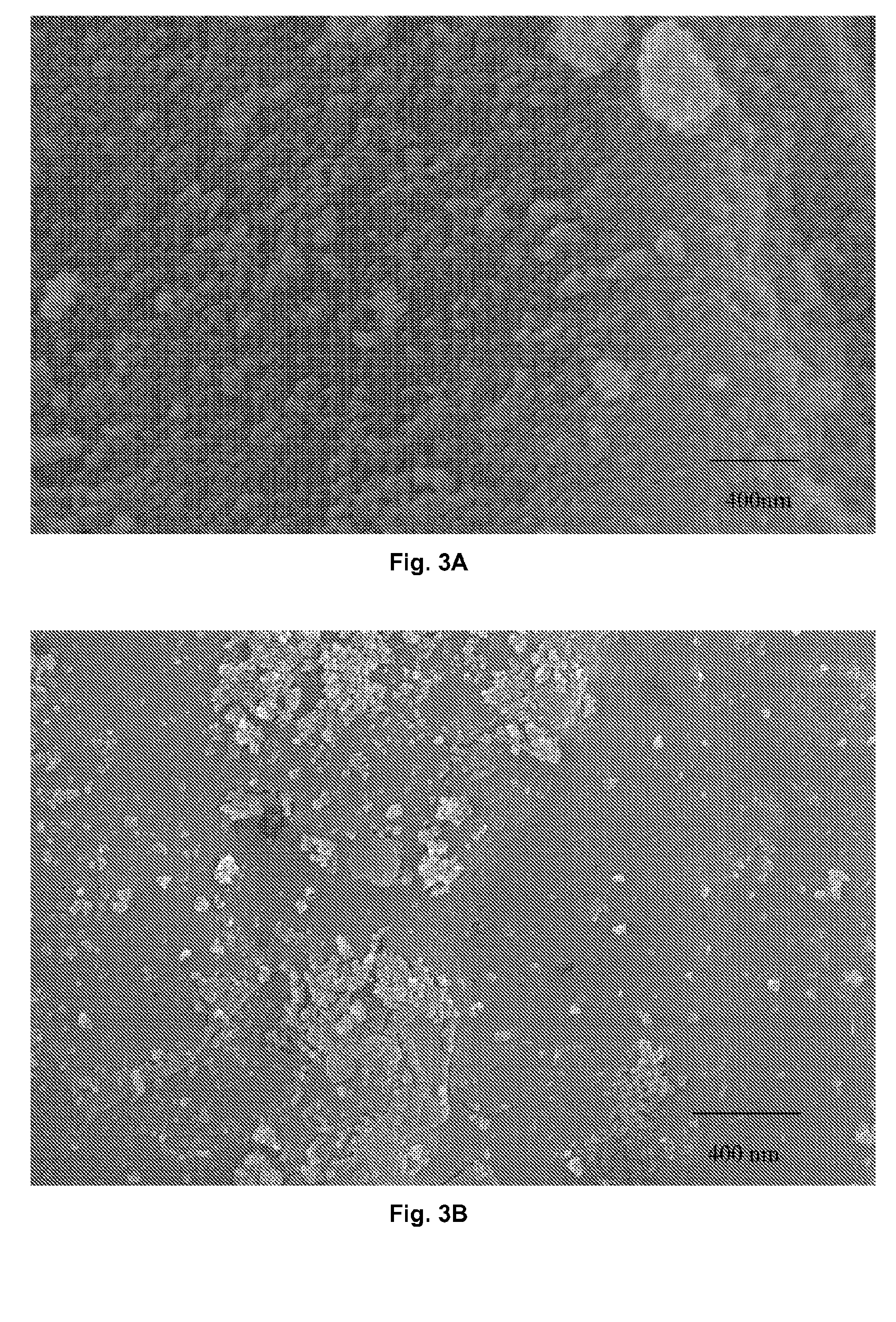Method for the dry dispersion of nanoparticles and the production of hierarchical structures and coatings
- Summary
- Abstract
- Description
- Claims
- Application Information
AI Technical Summary
Benefits of technology
Problems solved by technology
Method used
Image
Examples
example 1
A Method for Obtaining Co304 Nanoparticles Dispersed on Al203 Support Particles
[0046]5 g of Al203 particles with an average particle size of −6 μm and 0.05 grams of Co304 nanoparticles with an average size below 50 nm were used. The two ceramic powders were added to a closed tubular nylon container, with a volume of 60 cm3 of a Turbula type shaker mixer, occupying ¼ of the available volume. The container was stirred at a speed of 30 rpm for 5 minutes. The container was emptied and the resulting mixture showed an effective dispersion Co304 nanoparticles on the Al203 support particles, as shown in FIG. 1. By modifying the percentage of nanoparticles from 0.03% by weight to 5% by weight, an effective dispersion was obtained according to the reflectance curve in FIG. 4. For higher weight percentages of nanoparticles in the mix, non-dispersed agglomerates are obtained along with the dispersed nanoparticles.
example 2
A Method for Obtaining Sepiolite Nanoparticles Dispersed on a Substrate of Glass Fibre in the Form of Thread
[0047]5 grams of fibre glass were used, having an average length of 3 mm and a diameter of 10 μm, and 5% by weight of sepiolite fibrillar particles with an average length of 1.5 μM and an average diameter of 40 nm. The two materials were added to a closed tubular nylon container, with a volume of 60 cm3 of Turbula type shaker mixer. The container was stirred at a speed of 60 rpm for 10 minutes. The container was emptied and the resulting mixture showed an effective dispersion of sepiolite nanoparticles on glass fibre yarns as shown in FIG. 10.
example 3
A Method for Obtaining NiO Nanoparticles Dispersed on a Monocrystalline Si Substrate with Native Oxide Layer
[0048]A flat monocrystalline Si substrate with a 2 cm2 surface area was fixed by means of adhesive tape on the inside of the lid of the closed container used in the Turbula type shaker mixer. 1 gram of NiO nanoparticles smaller than 20 nm is introduced into the container. The mixture was stirred at a speed of 42 rpm for 3 minutes. Once the substrate had been removed, excess nanoparticles deposited on the surface were removed using a compressed air pistol at 4 bar pressure. The thickness of the layer of dispersed NiO nanoparticles was 30 nm determined by ellipsometry.
PUM
| Property | Measurement | Unit |
|---|---|---|
| Percent by mass | aaaaa | aaaaa |
| Thickness | aaaaa | aaaaa |
| Size | aaaaa | aaaaa |
Abstract
Description
Claims
Application Information
 Login to View More
Login to View More - R&D
- Intellectual Property
- Life Sciences
- Materials
- Tech Scout
- Unparalleled Data Quality
- Higher Quality Content
- 60% Fewer Hallucinations
Browse by: Latest US Patents, China's latest patents, Technical Efficacy Thesaurus, Application Domain, Technology Topic, Popular Technical Reports.
© 2025 PatSnap. All rights reserved.Legal|Privacy policy|Modern Slavery Act Transparency Statement|Sitemap|About US| Contact US: help@patsnap.com



